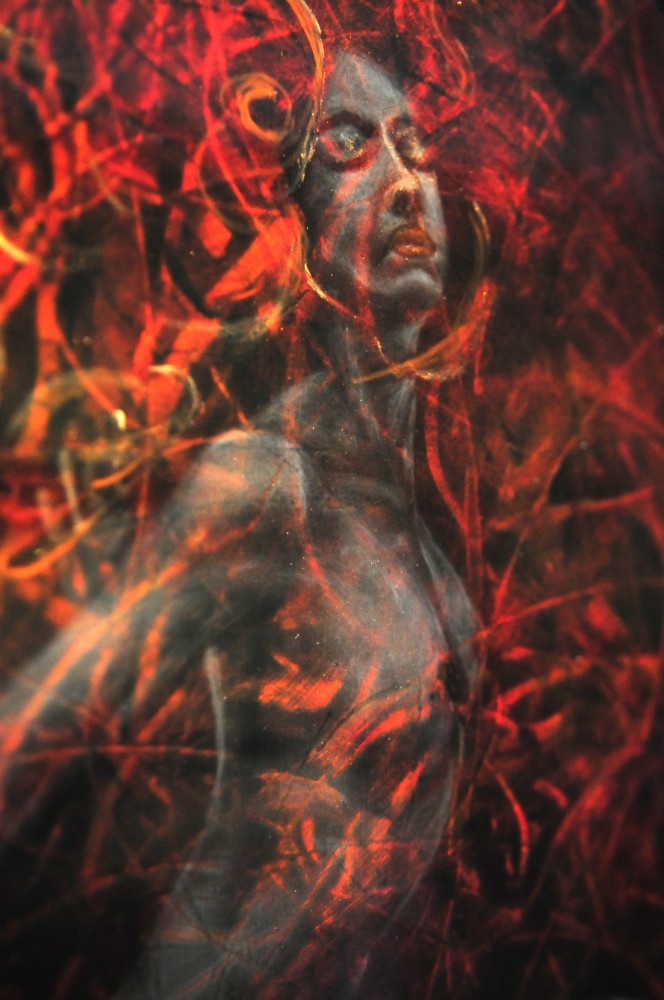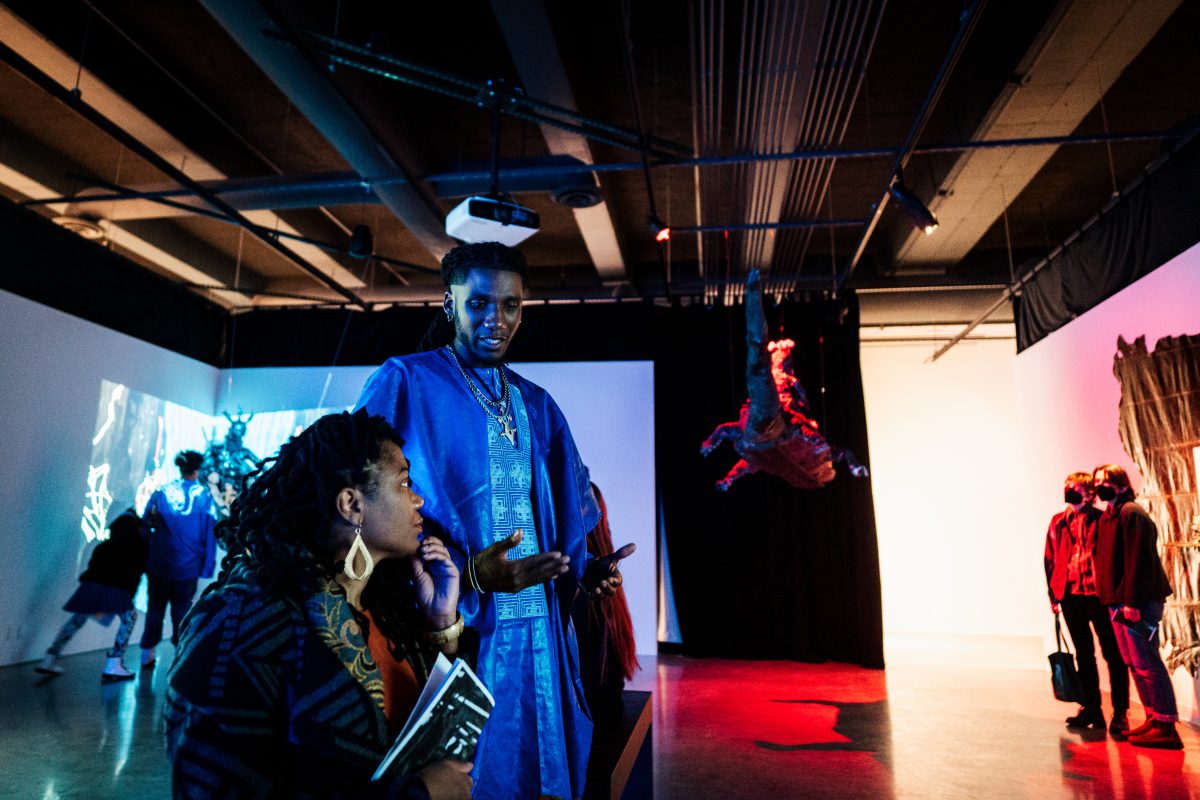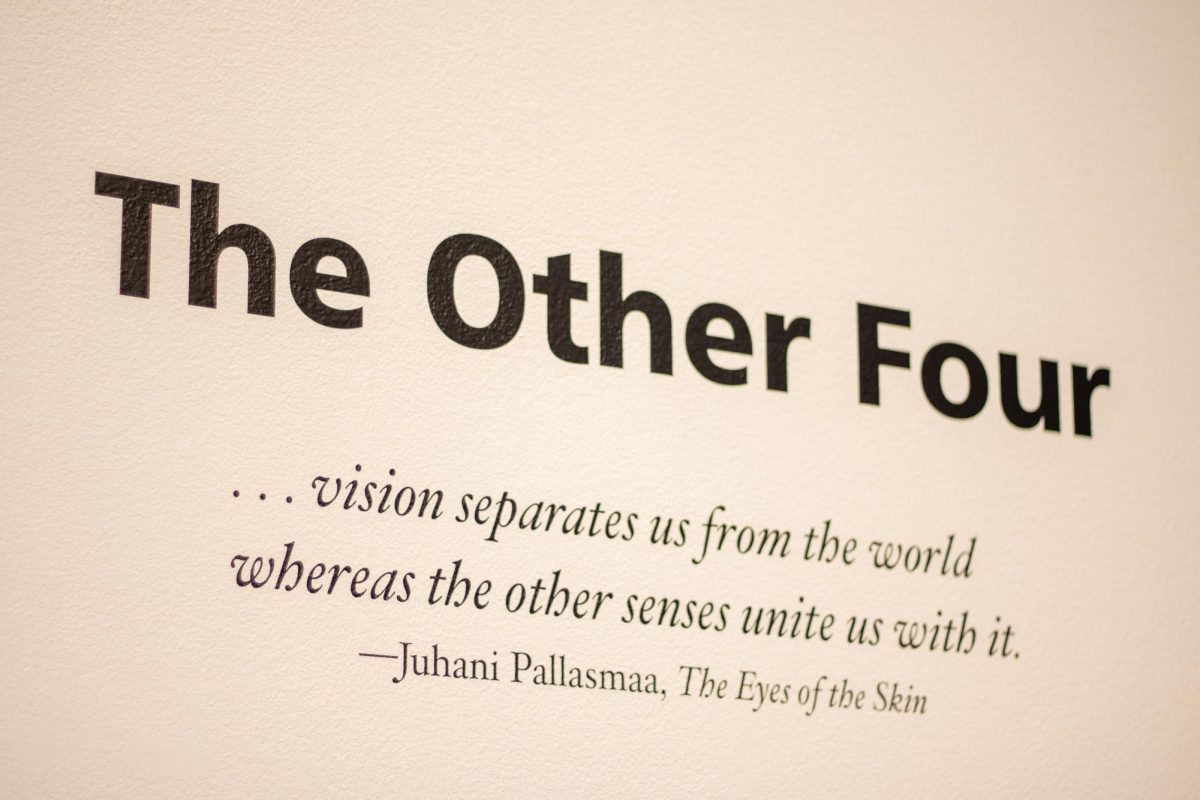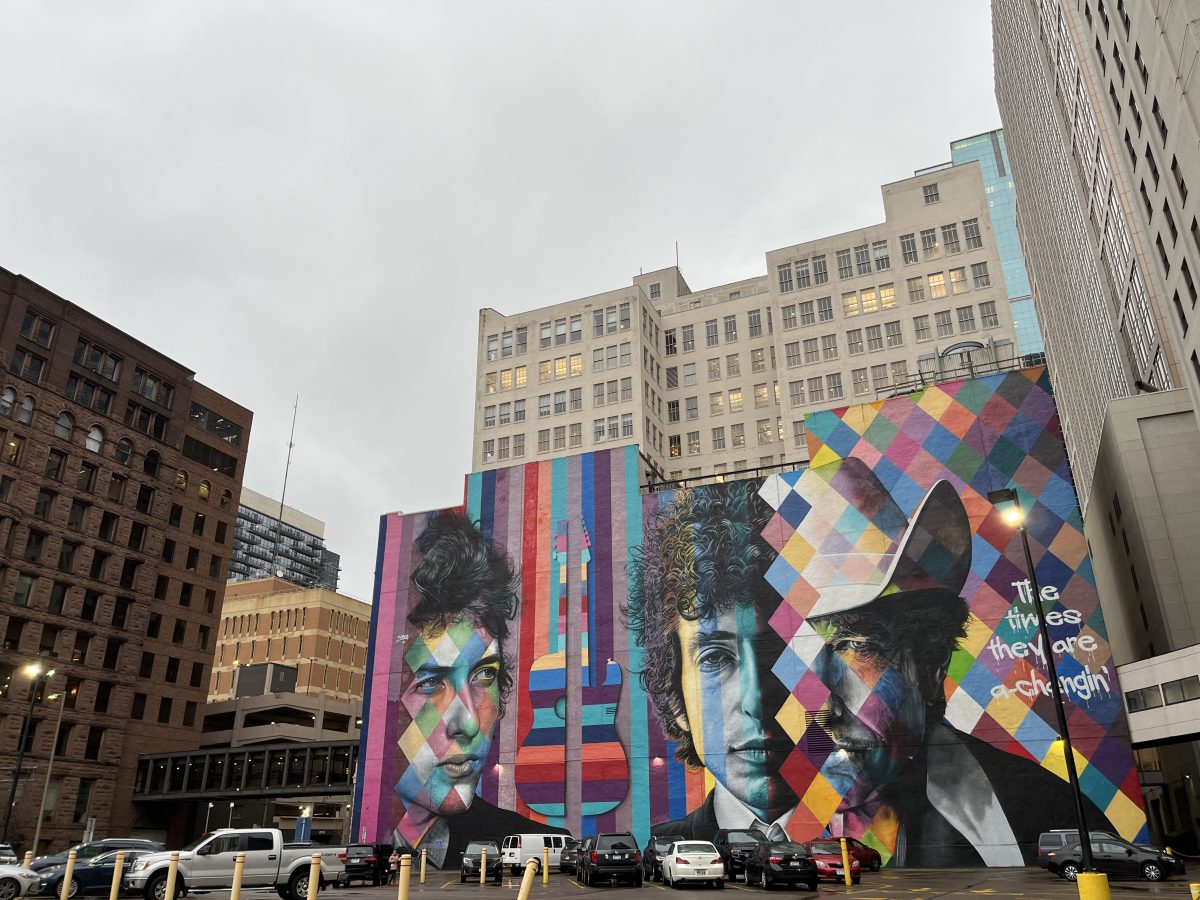What: Brian Mark exhibition When: Through November 15 Where: Rogue Buddha Gallery 357 13 Ave NE ItâÄôs not often that someone creates an entirely new mode of self-expression. Most people are stuck within the confines of tradition or certain stylistic tendencies, be it in writing, film or fine art. Brian Mark , on the other hand, is one of the select few to have transcended convention, using an innovative method of pouring acid on stainless steel. This bold medium allows for an experience that is wholly unique and deeply mesmerizing. The Rogue Buddha Gallery is now showing an exhibition of MarkâÄôs work entitled âÄúHaunted by Grace.âÄù The collection features three series of MarkâÄôs steel pieces that function, in the artistâÄôs words, to dignify the human experience. A&E had a chance to talk with Mark about his methods, his message and the birth of the acid-steel medium. How did you come up with the idea of making art with acid on steel? I was asked to produce a bronze piece to match a very old bronze. Bronze, as a metal, is composed of many metals, like tin, silver, brass, etc., so older bronzes are made of different recipes. I found out that a very famous patinist had done [the bronze] and that this gentleman was still alive, but barely so. He was very willing to die with all his recipes, because thatâÄôs what makes you a successful patinist; these recipes are your trade secrets. I contacted him and he was very mixed about letting me have some of them, but he decided he would allow me to know some of his secrets. When I started doing this particular patina on bronze it was very acidic and very nasty stuff. So I got a full moon suit, not just a respirator, and while I was working I noticed it was destroying my concrete floor as it dripped down; the concrete was just turning to sand. So to protect my floor, just out of necessity, I stuck a bunch of stainless steel down. As soon as [the acid] hit the steel it would create amazing effects, so I started messing around and experimenting. It took two to three years before I even came close to being able to manipulate any type of image, but even today only about one in seven of these images turn out. I have such a chemical cocktail going on that it can go south very quickly. How exactly is the final product made? I work with my live model first and do numerous drawings. Then I go to the metal and I take the drawing, place it on the metal and compose the drawing with grinders and Brillo pads for scratching. Then I produce the image by electroplating with gold, just like you would electroplate a ring. Afterwards I have to sand and hone in order to create a reflective surface. On top of all that, I use the different chemicals to create all the colors and shading around the images, so you get a figure that looks more three-dimensional, rather than a flat piece. That is all done with chemicals that need to be either heated or cooled, so IâÄôm always playing with extreme temperatures. IâÄôm constantly dancing on the edge and anyone around my studio will hear me scream and curse when I have a piece that is so right and IâÄôm so happy and then it dissolves in front of my eyes. The thing is that itâÄôs very complex. Think if you were to paint, but your paints are constantly changing colors and youâÄôre trying to physically stop them from changing or to turn them to other colors by cooling or heating or adding chemicals. ItâÄôs constantly active and thatâÄôs what makes it so difficult. Unfortunately, after one does not work I canâÄôt use that panel again. If I sand them down or grind them down, the images still come through, so all that becomes scrap. ItâÄôs a little maddening. ItâÄôs very temperamental. I love to talk about it, but I apologize for the fact that itâÄôs a complicated mess how I get my final results. How long does the process take? Because the chemicals are all constantly changing, I am a slave to a piece until I see it through. I canâÄôt walk away; I canâÄôt stop the chemical processes from happening. So after IâÄôve worked with my model and done a lot of other work, like getting the chemicals ready, IâÄôve already done 50 or 100 hours of work. Now I sit down to do the piece and I may be up for a day or two at least. At a certain point IâÄôm a human and I have to sleep. Pieces do go wrong because IâÄôm up on my third day and things get sloppy. I canâÄôt even get out of my suit often times and I canâÄôt have food in the studio. I think I need to work some of those bugs out [laughs]. ItâÄôs very clear that you have a respect for the human form. What is it that draws you to the body? I look at myself as much more like a choreographer, as far as explaining what IâÄôm trying to say with body language purely. ThatâÄôs really the only reason that so much of my work is nudes. I donâÄôt look at it necessarily just for the sensual form of the figure, but much more to get to the body language. So when I sit there and come up with how IâÄôm going to make my statement, I really think more in the sense of ballet. A lot of my models are dancers and the work ethic is perfect, they know how to make statements with their bodies. I do shy away from clothing because it almost always suggests class of one sort or another. IâÄôm really trying to be universal; itâÄôs just about humanity. Though IâÄôm fine with the idea of a sensual form, it rarely comes to mind. These pieces are deceptively simple at face value, but have so much going on underneath. Does your layering technique force people to examine your art more critically? I try to respect my audience when it comes to not hitting them over the head and treating them as a naïve viewer. The fun part about something is discovering meaning or, in my case, seeing part of the image that you might not have even known existed six months after youâÄôve purchased it. Different types of physical light bring out the image. If you see the same piece during daylight hours, there will be things you will not physically be able to see, but halogen lights, different directions and types of UV light actually bring out different images and thatâÄôs the fun part. I need to come up with a much more sophisticated term for this, but it is, quite frankly, the âÄúWhereâÄôs WaldoâÄù effect. The idea is that the world has lots of meanings and truth and beauty, but you have to listen. You have to practice the art of being awake. IâÄôm asking my viewers to practice shutting all this noise out and really trying to be observant. That idea is going to be there in all my works. It seems a lot of contemporary work today is trying to achieve what billboards achieve. The fact is that, when it comes to fine art that youâÄôre going to have in your home or visit in a museum, you shouldnâÄôt understand everything by driving by it at 50 mph. I think most of the real lessons in life are that way.

















